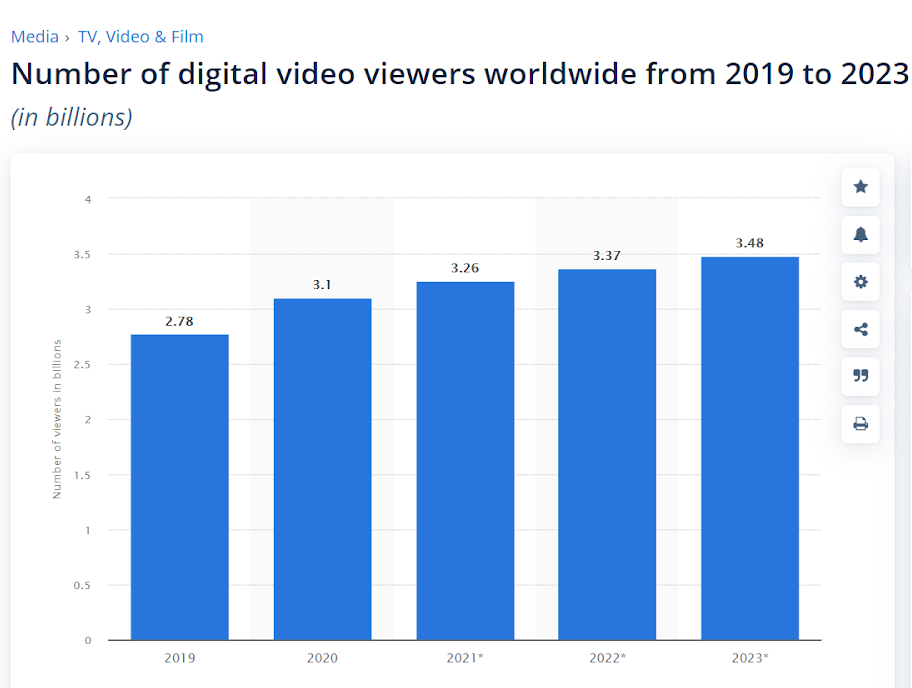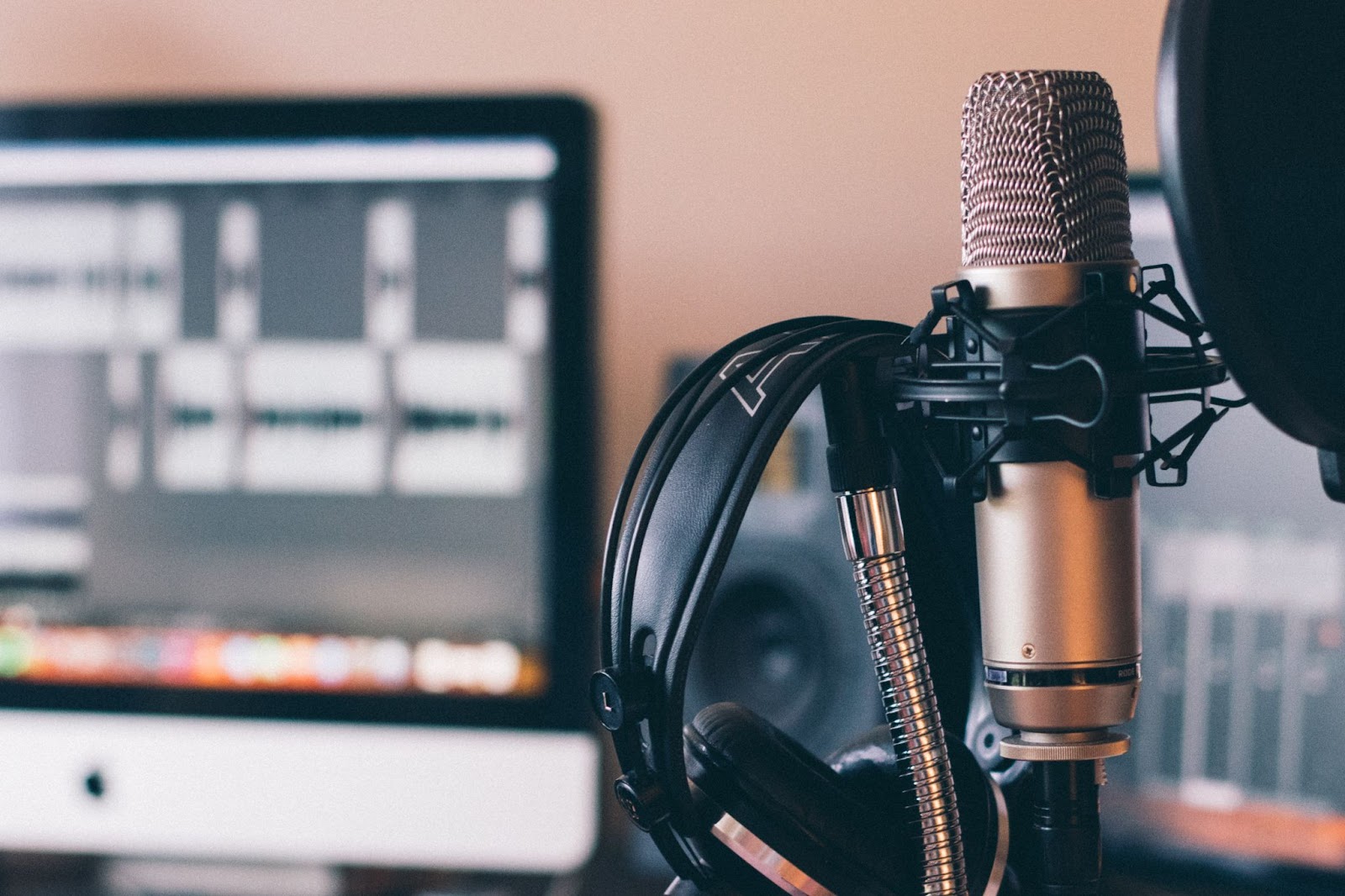There are a lot of videos out there that can be fun and informative. In fact, over 500 hours of videos are uploaded to YouTube every minute. That's a lot!

Video is one of the best ways to express your story. And with over three billion internet users watching, streaming, or downloading them every month, there's massive potential to turn your love of filming videos into a scalable business.
But what happens when those videos aren't accessible for everyone? Maybe someone can't hear the video or can't see it properly. Or, maybe they don't understand the language in your video.
We’re going to take a look at some ways to make your video content more accessible for your audience, from hiring voiceover talent to creating captions.
What is video accessibility?
Video accessibility is the ability for those with disabilities — or who otherwise may find it difficult — to understand and enjoy an online video.
Video accessibility is especially essential to people with the following disabilities:
- Blindness
- Color blindness
- Low vision
- Deafness
- Cognitive impairments
Benefits of having accessible videos
A lot of people don't realize how many different types of disabilities or barriers exist that could make videos tough to watch.
It could be that someone is hard-of-hearing or may have a visual impairment like color blindness (which can make videos harder to follow). Or maybe the accent in the video makes it difficult for them to understand what's being said.
Whatever the case may be, not everyone will have an equal experience if you're not taking steps toward accessibility. Here are the top benefits of accessible videos:
- Decrease viewer frustration: If they can follow along easily, your audience will be less frustrated and more engaged. So, if someone is watching your video tutorial on personalizing websites, they can follow along more easily.
- Reach a wider audience: If you're aiming for a global market, it makes sense to produce accessible videos with content that meets the needs of a larger audience.
- Achieve higher engagement: If someone is deaf or hard of hearing, you aren't going to catch their attention as much by saying a particular line — that's why captions are essential.
- Boost watch time on your videos: The better the experience, the more likely someone will watch a video to its end.
- Improve SEO: Having captions and transcripts (which both aid accessibility) also improves your search engine optimization. It helps Google find your content more easily for people searching in different languages. For example, if you want to rank for the search term "benefits of AI customer service," a transcript of your video including relevant info on that topic will affect SEO rankings.
How to make videos more accessible
So, how can you create accessible content? Let’s cover our top five tips for video accessibility:
1. Hire voiceover talent
This can be a pretty straightforward option. Suppose you have someone with an excellent command of the language and good pronunciation. In that case, they could record audio over your video to make it easier to understand for people who may not speak English as their first language or those who are hard-of-hearing.
So, if you have an informative video on app stickiness but some people find your accent challenging to understand, then hiring voiceover talent could help make sure that the words are pronounced correctly.
So, what makes a good voiceover read? There are specific rules and best practices that make it easier to understand and listen to. Your video will be more engaging if done right because viewers won't have as much trouble understanding the content.

Voice matching
Voice matching is simply when you get someone whose voice sounds like a video viewer expects the person in the video to sound based on their appearance. It's important not only because people expect to hear voices they've heard before, but also because a good voiceover helps correct for any awkward pauses or misread lines.
Sometimes studios or production teams choose not to do this and instead hire a voice actor who doesn't match the character. This can still work as long as the audio quality is good, but it won’t completely address the issues that voice matching fixes.
Accent reduction
If one of your actors has an accent that's thick or difficult for viewers to understand, then it might be necessary to get rid of it so people can hear everything clearly. The good news is that voice actors are trained in that — making sure their lines come through loud and clear without any distractions from heavy accents, mumbling, or anything else.
This isn't always possible with every line. But if there's enough time between recording sessions where the voice actor can review what was recorded, then they may be able to remove any unwanted sounds or accents before submitting it.
Narration vs. dialogue
Narration is when you get someone who can speak clearly and engage with the audience to tell a story or give background information about what's happening on screen. (Think of all those documentaries where they interview people without any on-screen action.)
When this happens, it gives more time for viewers to take in what they're seeing and also build some context around each shot, which will help them understand things better down the line.
On the other hand, dialogue just means you're having characters talk like normal people. The goal with dialogue is to avoid sounding stiff and robotic, instead sounding natural enough that everything they say is believable.
Say you're filming a video on augmented reality in eCommerce. You don't want a voice actor who sounds dull and uninterested in what they're saying, or who so clearly doesn’t understand the topic that they can’t hide the fact they’re reading a script.
1. Use closed captions
Captions are often the best way to make videos accessible for people who are deaf or hard of hearing. Captions also benefit anyone in a situation where they can't turn on the sound, such as someone at work or watching videos with other media playing .
Captions allow viewers to understand difficult accents and vernaculars, difficult terminology, fast speech patterns, low audio volumes, and more. Other uses of subtitles include lyrics from songs, which also benefits across multiple languages.
For example, if you're filming contact center training videos, then viewers will benefit from captions to understand their video-based training and self-service content.
YouTube automatically formats your video with subtitles so that people can read along as the action happens on screen. It’s a great idea for a lot of reasons, especially if you're interviewing someone and want to include their responses in text form.
3. Translate
Unsurprisingly, not all content is available in every language around the world. But making sure that as many people as possible can understand what's going on will help your audience feel included.
Translating important videos can also go a long way toward improving engagement by giving someone with different needs access to good information.
There are a number of benefits of translating. More people can understand what your video is about, especially if you are targeting a specific region of the world. And viewers can find your video content more easily if they’re searching online in their own language.
Say you're making an informative tutorial video on how to fix an access issue with WordPress. If someone from Spain wanted to watch the video, they might not understand English. Translating your content into Spanish would help them follow along without having to stop and search for different information in another language!
4. Eliminate background noise

If you're recording something at home, it's easy to get distracted by the dog barking, a spam phone call, or someone dropping a dish in another room. Or maybe you're filming in a multi-channel call center, but the background noise is preventing your viewers from hearing you clearly.
Turn off your phone and close the door so that all attention is on what you're saying. Or if possible, try recording your videos from a quieter place to make sure no important information is missed.
(And don't forget the royalty free music!)
Video accessibility is a must for any filmmaker
So, there you have it — our top tips for making videos more accessible to the widest audience possible. Once you've honed your skills, you'll be able to help viewers around the world and/or with varied needs understand everything that's happening on screen.
It's worth taking the time to make sure your videos are as inclusive as possible, especially if you're creating content for a global audience.
Further reading
Interested in reading more top resources and getting our best filmmaking tips and tricks? Here are a couple of our most popular articles from across the Soundstripe blog:
- A Guide to Non Copyright Music for Film
- The Best Sound Effects for Video Editing and Sound Design
- How to Find and Download Background Music for Videos
- Your Guide to Licensing Great Songs from a Music Library
- How to Choose the Best Music for Videos
Grace Lau is the Director of Growth Content at Dialpad, an AI-powered cloud communication platform and one of the top alternatives to RingCentral for better and easier team collaboration. She has over 10 years of experience in content writing and strategy. Currently, she is responsible for leading branded and editorial content strategies, partnering with SEO and Ops teams to build and nurture content.

